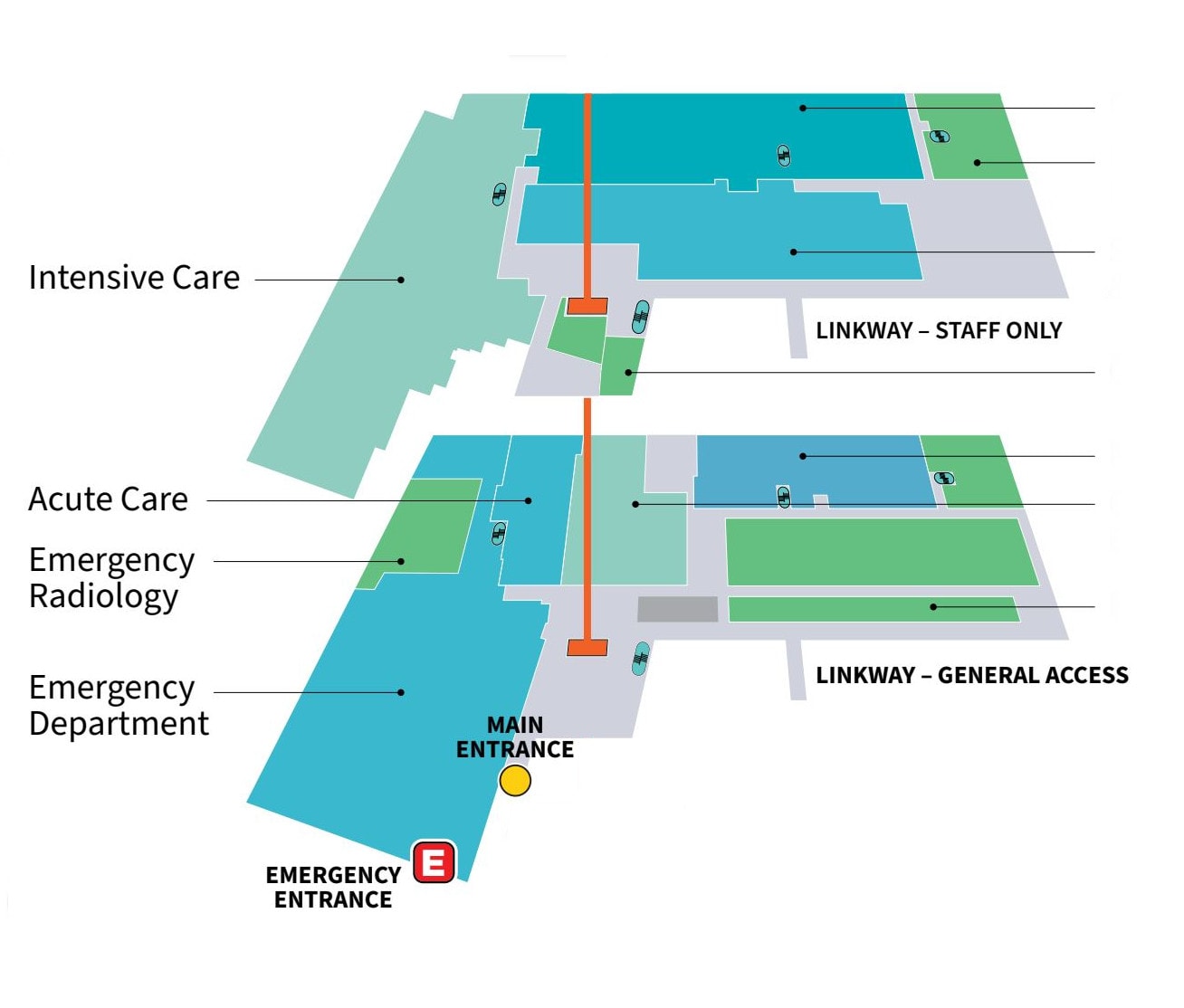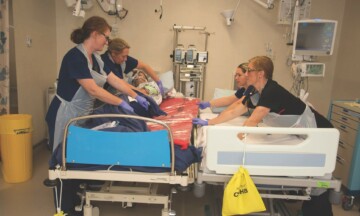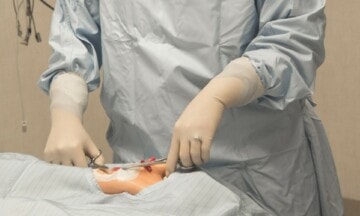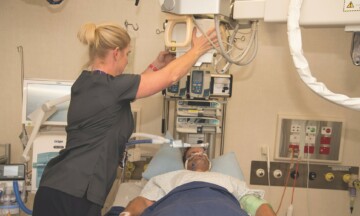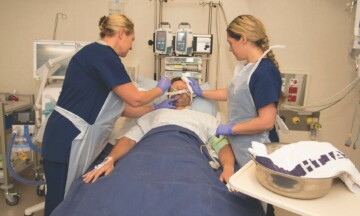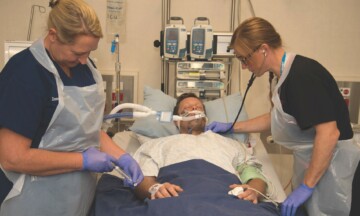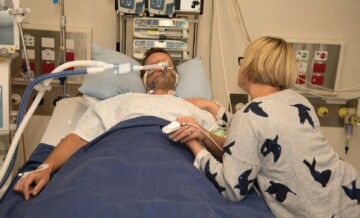What is respiratory failure?
Respiratory failure means that patients are unable to breathe normally on their own.
What complications can result from respiratory failure?
When patients are unable to breathe normally, the body may lack oxygen. They may also experience a build-up in their blood of carbon dioxide – a gas that is usually eliminated.
Low level of oxygen or high level of carbon dioxide can cause severe complications if not treated properly.
What can cause respiratory failure?
Many medical conditions can lead to respiratory failure.
Some of these conditions are directly related to the lungs, such as:
- Asthma
- Chronic Obstructive Pulmonary Disease (COPD)
- Pneumonia (lung infection)
- Pulmonary oedema (water on the lungs)
Other conditions leading to respiratory failure relate to other organs and systems of the body, such as:
- A failure of the nerves and muscles involved in breathing and coughing
- A life-threatening infection.
What can be done to help breathing?
When patients develop respiratory failure, they may require help to normalize the exchanges of oxygen and carbon dioxide in their body.
- Extra, or supplemental, oxygen can be given through nasal prongs or a mask. The treatment may be enough to correct low levels of oxygen for some patients
- When the respiratory failure is severe, a breathing machine (mechanical ventilation) is sometimes required.
How is the ventilator adjusted to meet the needs of the patient?
The ventilator has various settings that determine how much work the patient does and how much oxygen is given.
- It can be set to breathe entirely for the patient, by controlling how often the patient gets a breath and the size of each breath;
- It can also be set to allow the patient to control his or her own breathing. This allows the patient to take as many breaths as needed, and the machine helps to give the right size breath.
How long will the patient be on the breathing machine?
It is often difficult to predict how long a patient will need the breathing machine. It will depend on several factors, including:
- The nature and severity of the medical problem that led to the respiratory failure;
- The general condition of the patient before the respiratory failure;
- If any new complications have emerged after the patient went on the breathing machine.
Members of the ICU team may be able to give you their "best informed guess" of the duration of mechanical ventilation, but keep in mind that this estimate may change as the patient's condition evolves.
What conditions need to be met before the patient can be taken off the breathing machine?
Before mechanical ventilation is stopped, three conditions usually need to be met:
- Patients need to be awake enough to start each breath (their brain must tell them to breathe consistently) and to cough properly;
- Patients need to maintain acceptable levels of oxygen and carbon dioxide with minimal help from the breathing machine. This indicates that they are likely to be able to breathe without the machine;
- The medical problem that led to the need for the breathing machinemust have improved significantly. This may be relatively easy to assess if the initial problem was related to just the lungs. But it may be harder to determine if the problem was related to something else such as airway swelling or generalized severe weakness.
How do we know if a patient is getting better?
Several signs can indicate that a patient is getting better during an episode of respiratory failure:
However, the amount of oxygen, suctioning, and pressure may vary quite a bit from hour to hour. So, it may be difficult to determine if the patient is truly getting better by looking only at the numbers.
The bedside nurse, and ICU Doctor will be best able to tell you if any of these changes indicate a real improvement.
What are the risks of being on the breathing machine for a long time?
Like any medical intervention, the breathing machine may cause certain complications. Long periods of mechanical ventilation can be associated with:
- Mouth, vocal cords and throat injuries;
- Lung infections;
- Muscle and general weakness and fatigue, including a lack of strength to breathe independently.
Although many of these complications are treatable and reversible, others can present challenges. For example:
- A lung infection (pneumonia) can sometimes cause other organs to fail, and may become life-threatening;
- Long inactivity can delay patient recovery for weeks or months, characterised by alternating periods of improvement and deterioration.


